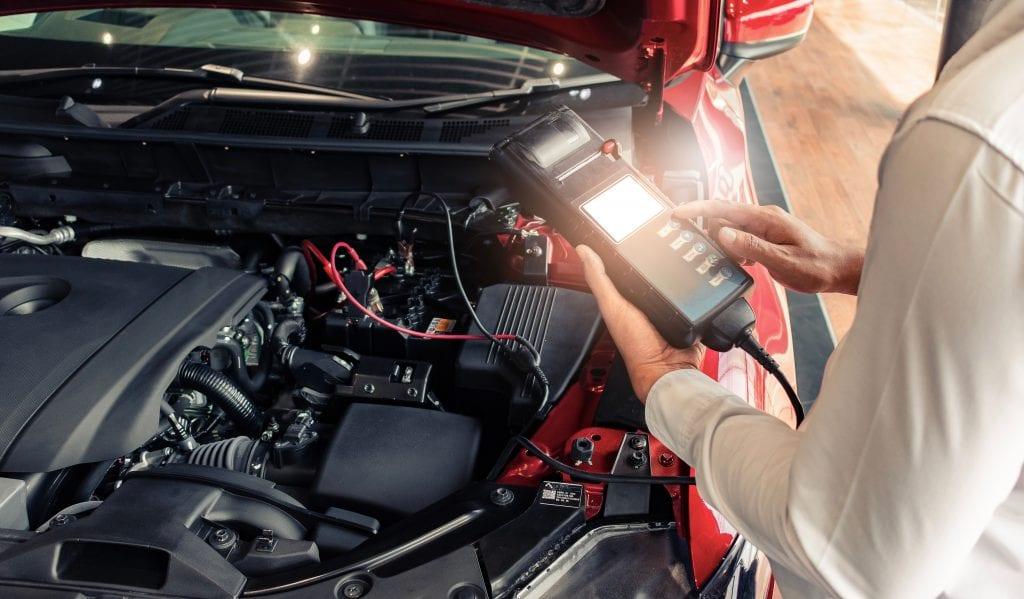How to Negotiate the Price of a Used Car

Contents
Introduction
Let’s say you’ve been shopping for a great used car. You’ve found a nice example of the model you want. You’ve checked out the car in person, and you really like it. All that’s left is to hand over the money and drive away — right?
Not so fast. Used car prices are almost always negotiable. With rare exceptions (such as buying from a “haggle-free” dealership), the price you see on the vehicle listing should *not* be the price you actually pay for it. In fact, most used car sellers pad their asking prices by at least a few hundred dollars in anticipation of this.
But how do you get from the asking price to the price that you actually should pay? That’s where the art of negotiation comes in.
If you’re new to the idea of negotiating a major purchase, the very thought of it can be pretty intimidating. It brings to mind hardball sales tactics like “don’t take no for an answer” and “always be closing.”
Don’t worry, though. You don’t have to be a professional negotiator in order to buy a used car at a fair price. Whether you’re buying from a dealership or a private party, there are a few simple steps you can follow to ensure you’re not paying too much for your next car.
Negotiation Steps

Looking Up the Current Market Value
The first step in any used car price negotiation is researching the car’s current market value. To do that, we recommend using one of the well-establishing online pricing guides, such as Edmunds or KBB. These research tools are backed by massive amounts of transaction data, so they are the most accurate in the business.
Online pricing guides will ask you to enter lots of details about the car before offering up an estimated value. Make sure to provide as much info as possible, including not only the car’s year, make, and model, but also its options, colors, condition, and miles. It’s critical to get these details right in order to return an accurate estimate. If you mistakenly select an optional engine, for instance, it could throw off the estimate by a thousand dollars or more.
Once you’ve entered all of the details, the pricing guide will report the latest average sales prices for similar cars in your area, showing both the “dealer retail” value, which is what you’d expect to pay at a dealership, and the “private party” value, which is what you’d expect to pay if you’re buying the car from an individual seller. Note that “dealer retail” values are typically at least $1500 higher than “private party” values because dealerships sell their cars at a slight markup in order to cover the costs of running a business.
One caveat to using Edmunds’ or KBB’s pricing guides is that they don’t work very well for unusual cars, such as rare special editions or examples that have far fewer miles than is typical (e.g. a 15 year old car with only 30,000 miles). That’s because their pricing models are based average transaction prices, which don’t normally include such outliers. For unusual cars, you’re better off researching recent sales prices for similar examples on auction sites like eBay Motors, Bring a Trailer, or Cars & Bids. And for classic cars — typically 20+ years old — we recommend Hagerty’s valuation tool.
Please keep in mind that all of these guides offer estimates only. The prices quoted should be used as approximations, not gospel. At the end of the day, any used car is worth what a buyer is willing to pay. Depending on the specific car and the specific buyer, that could be far more — or far less — than a pricing guide suggests.
After doing this research, you’ll have a general sense of the car’s real world value. Compare that figure to the car’s asking price to see how much of a discrepancy there is. If there’s a huge difference — for example, the seller wants $20,000, but KBB says it’s only worth $10,000 — you may want to consider crossing that car off your list. Some sellers simply have unrealistic expectations of their cars’ values, and it can be hard to convince them otherwise.
If it’s somewhat close, though, that’s a promising sign. But don’t start the negotiations just yet. There is one critical step you should take before you make a formal offer.

Getting a Pre-purchase Inspection (PPI)
The biggest difference between buying a new car and buying a used car is that used cars have been, well, used. The condition of new cars is pretty much all the same: fresh from the factory. But used cars vary widely from one to the next, depending on how their prior owners drove and took care of them. Where one five-year old Honda Civic may be in tip-top shape, another may be run down and neglected, with tons of needed work. The value of those two cars would be vastly different, despite the fact that they’re both the same year, make, and model.
That’s why, before you make an offer, it’s critical to have any used car that you’re seriously considering inspected by a trusted mechanic. This process, called a pre-purchase inspection (PPI), typically costs about $250, and it is well worth the price. At the end of it, the mechanic you’ve hired will provide you with a detailed report on the condition of the vehicle, including any needed repairs and their approximate cost. They also should be able to tell you whether the car has any evidence of a prior accident, something that does not always show up on its vehicle history report.
Most sellers, whether they are dealerships or private parties, will readily agree to have their cars inspected, if you ask. If not, that’s a major warning sign. Keep in mind that the cost of the inspection is entirely yours — and rightfully so, because you are hiring the mechanic to look out for your own interests. The seller may suggest you call the repair shop they typically work with to verify the car’s condition. That’s never a bad idea, but we’d also insist on getting your own independent analysis, just to be on the safe side.
Arranging a PPI is usually as simple as locating a good mechanic in the area — ideally one who specializes in the brand of vehicle being evaluated (e.g. a Honda mechanic for a Honda Civic). Yelp is a great way to find them. Be sure to give the shop a call ahead of time to schedule the appointment, and then have the seller drop off the car at that time. When the inspection is complete, the shop will give you a call to collect the payment and also to report on the results. Alternatively, you can always drop by in person to pay the bill and collect the report.

Making Your Offer
Once you have a pre-purchase inspection report in hand, you’ll have a few decisions to make before you make an official offer on the car. First, if the report contains any big surprises, such as evidence of a serious accident or flood damage, then it’s probably best to walk away and focus your efforts on finding another, better car. Unless you’re looking for a rare model, it always makes sense to turn down a subpar example and keep searching. You’ll find a better one eventually.
Most used car inspections will reveal at least a few needs, such as worn brake components or tires without much remaining tread. These aren’t reasons to walk away from a deal, but you should factor the costs of any needed repairs into your estimate of the car’s value. For instance, if the car needs new tires and brakes, and that’s estimated to cost $1000, then we’d recommend subtracting at least half of that amount from your value estimate.
It’s also possible that the report will come back with only glowing remarks about the car and its condition. If so, that’s great news for you. A clean bill of health should also impact how you think about the car’s value. Condition is such an important factor in buying a used car, especially an older one, that a strong inspection report actually adds to its value. That doesn’t necessarily mean that you should make a full-price offer. But if the asking price is already close to its estimated value, then you might want to consider it, just to wrap up the sale quickly before another buyer swoops in.
Factoring in all of the above — pricing guide estimates, adjusted as needed from the inspection report — should give you a pretty clear idea of the car’s fair value. Note that this is typically more of a range rather than an exact number. For instance, if the pricing guides show a value of $10,000 to $11,000, and the car needs about $1000 in repairs, then you’d want to target a range from $9000 to $10,000 for the purchase. Anywhere within that range would be a fair deal for both parties.
Most sellers are going to expect to go back and forth on the price at least once during a negotiation, so we generally recommend starting off with an offer towards the bottom of your calculated range, perhaps even slightly below it. That gives the seller a chance to come back with a counter offer — hopefully one within your target range.
Note that we do *not* recommend making an offer far below your target. “Low ball” offers, as they’re known, are not really fair to the seller. Worse, they can cause a seller to dismiss you as a serious buyer, bringing the process to a premature end. That’s the last thing you want after you’ve gotten this far.

Finalizing the Deal
When making your initial offer, be sure to explain all of the factors that went into it, including your pricing research and any pertinent details from the mechanical inspection. You never know — the seller may accept it without a second thought. If not, though, that’s okay. It’s all part of the negotiation process. Just wait for them to come back with a proposed counter offer, and repeat until you arrive at a price that is mutually acceptable.
This back-and-forth can take place in person, over the phone, by email or text. It can play out over the course of just a few minutes or may extend across a few days — perhaps even a few weeks, though longer negotiations are the exception, not the rule.
As you work ever closer to a deal, what’s most important is that you, as the buyer, have a clear upper price boundary. In the heat of the moment, it can be tempting to accept a price that’s higher than your target, just to put a quick end to things. Try to let reason rule the day, though. If the seller won’t accept an offer within your upper limit, the best thing to do is walk away. Sellers can always reach back out if they change their minds. In many cases, they will.
In fact, as a buyer, walking away from a negotiation is one of your most powerful tools. Don’t be afraid to use it. There are plenty of other good used cars for sale at any given moment. So if anything’s making you feel uneasy or unsure about the process, take a pause and consider your options. Whether you’re working with a dealership or a private seller, negotiations should be friendly and fair to both sides. Anything less than that? No sale.
The Bottom Line
Despite the stories we’ve all heard, negotiating the price of a used car shouldn’t involve playing games or using secret tactics. It’s not about one side taking advantage of the other. Instead, the process should be rooted in objective tools and data, including real world comparable values for the car, plus a professional evaluation of its condition. When you focus on the facts, it becomes far easier to arrive at a price that’s mutually agreeable to both parties.
That’s the true art of negotiating a good deal.